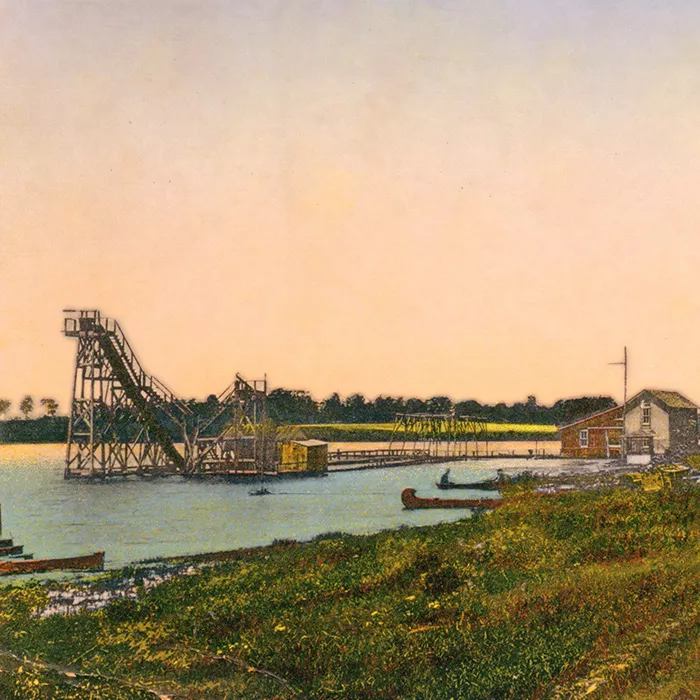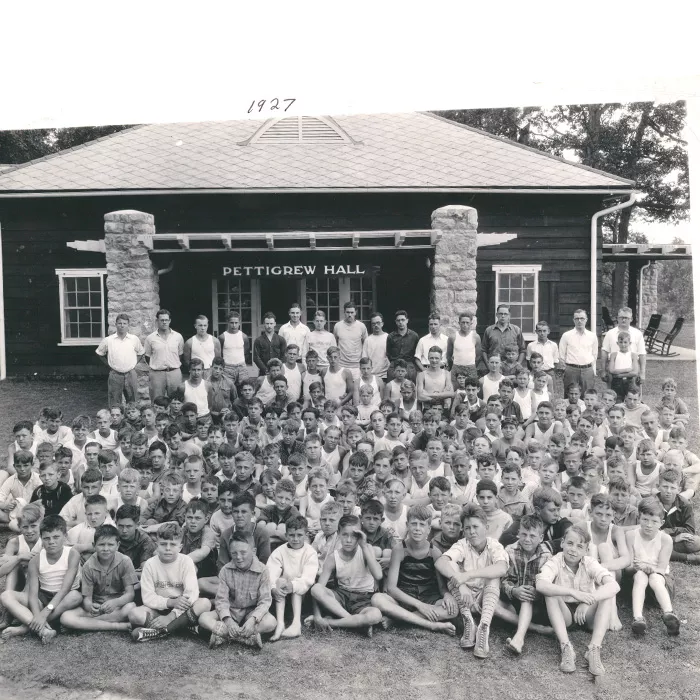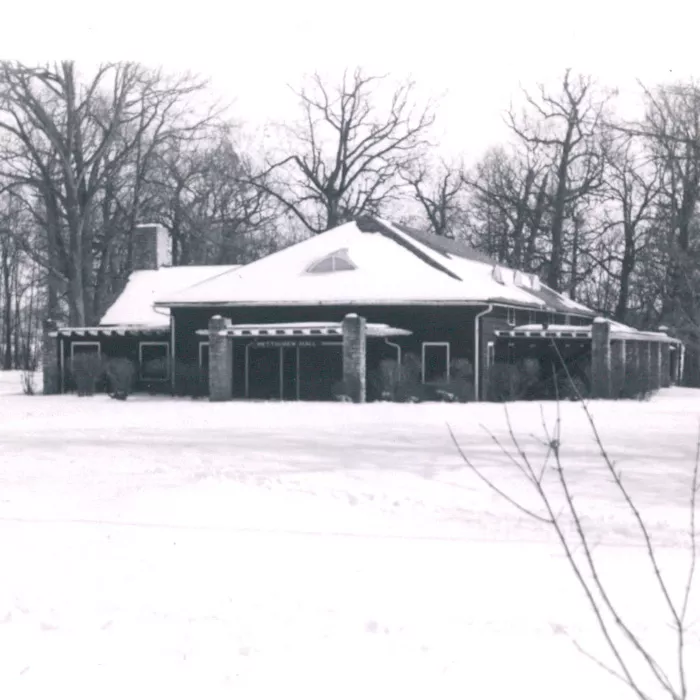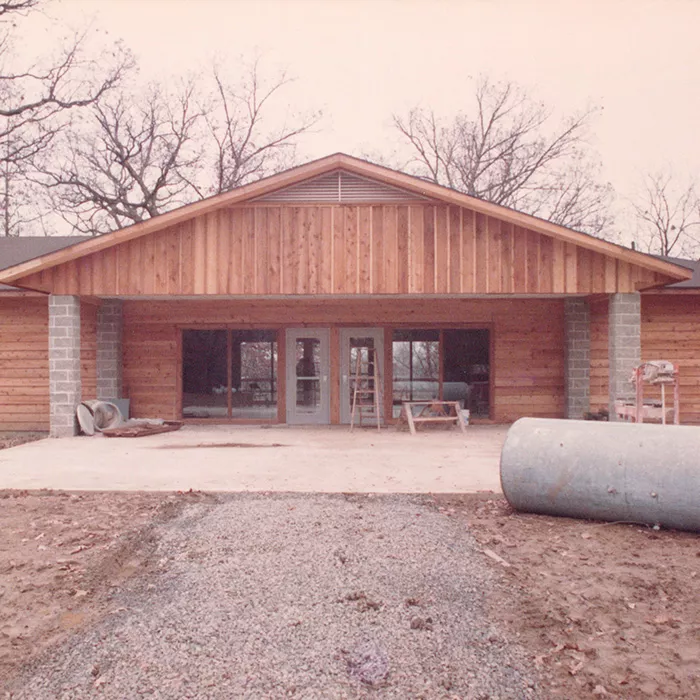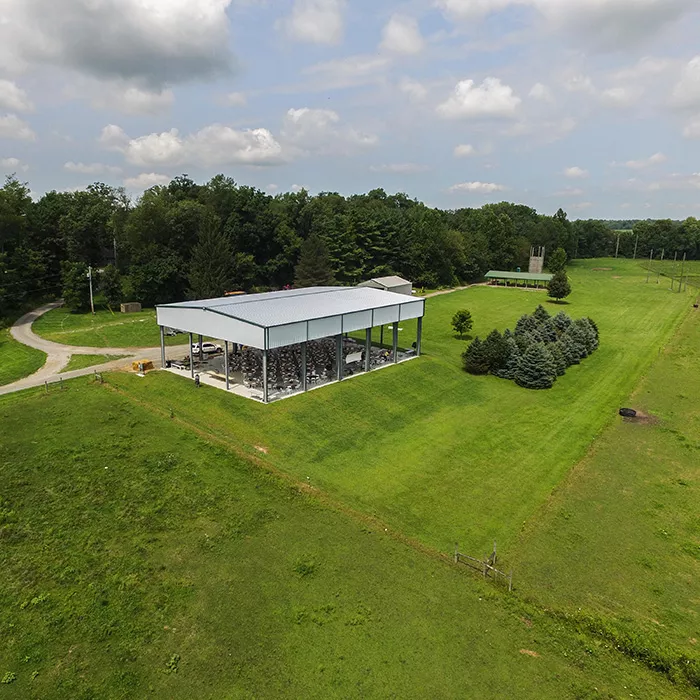1910-1913: The YMCA Arrives At Camp
The Metropolitan YMCA of Columbus’s camping programs began in 1910 with 128 boys at Camp Budd, 14 miles from Columbus. In 1913, Harry Spyker brought 35 boys to our current camp for ten days, naming it Camp Bailey in honor of Mahlon Baily, the boys' director.
1928: Construction Progress
Our back three summer cabins (10-12) were built in 1928, bringing camp capacity to 144. “Old Man Askren,” a development company owned by a Bellefontaine resident, completed the cabins and Pettigrew construction and remodeled the dining hall, built in 1896.
1929-1937: Caretaker Lodging
Guy Rostofer began working as a camp farmer at Camp Willson in 1929. Camp caretakers Guy and Dot Rostofer lived in a double log cabin for the first eight years of their stay on the property. A new caretaker’s house was built for $5,800 by the Costin Brothers of Bellefontaine in 1937. The Rostofers lived in this house until Guy’s retirement in 1986.
1950: New Buildings, Repairs and Communication
The camp hired an Amish group from Plain City, led by Attlee Mullett, to construct the Arts & Crafts Building and Health Center and repair Pettigrew Hall and the dining hall.
Bob Slemmer built the camp’s communication system using a telephone, and P.A. Brad Kunze maintained it until Inter-Tel Technologies of Columbus donated a used telephone system in 1997.
1963: Ranch Camp Expansion
Camp Willson added 80 acres by purchasing the Fawcett Farm, which became Ranch Camp. In 1970, it was dedicated to Guy Rostofer, camp caretaker from 1929-1986
1980-1981: Historical Cabin
Program Director Thom Peters located a 150-year-old log cabin, which Bellefontaine Mayor Bob Tynan donated in 1980. The cabin was moved to camp and restored by Guy Rostofer and CETA Workers in 1981.
1993-1998: New Winterized cabins
Two additional winterized cabins were added in 1993 and 1998, bringing our winterized capacity to 200.
1998: Hay Field Expansion
An additional 46 acres, located on the south side of County Road 11 across from the camp entrance road, was purchased from Tom Ewing. Camp Willson uses this land for horse hay production.
YMCA Camp Willson Directors
- Harry Spyker: 1913-1934
- Hank Baldwin: 1934-1938
- Casey Klippel: 1938-1959
- Bob Schmidt: 1959-1961
- Al Deiss: 1961-1969
- Gale Galbreath: 1969
- Bob Hildreth: 1969
- Mike Daum: 1970
- Frank Wilcox: 1971-1978
- Bruce Boyer: 1979-1984
- Tim Milbern: 1984-1986
- Rob Habicht: 1986-1988
- Anne Brienza: 1989-2015
- Jim Sexstone: 2015-2019
- Heather Graham: 2019-2024
Sources
The History of Men’s Camp; the research of Bruce Boyer, Thom Peters and Frank Wilcox, and vivid memories of Guy Rostofer, Bob Hildreth, Tracy Rhea and Jim Roehm. Revised in 1998 by Anne Brienza.


